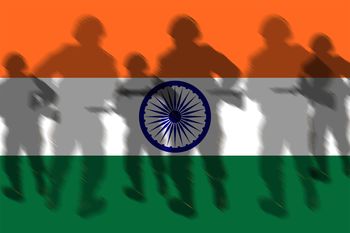At the time of writing, India and Pakistan have reached a ceasefire agreement. Nevertheless, anyone with even a cursory familiarity with subcontinental history since partition cannot help but be struck by a sense of deja vu at the fifth war between the two nations.
In many ways, it was the same old Pakistani playbook: provoke India with a gruesome terror attack via proxies, scream innocence when India retaliates, escalate hostilities, threaten the nuclear option, compel the world to pay attention, but simultaneously lobby frantically for help to stop the war before being decimated. Its army’s search for relevance, and a distraction from its own huge unpopularity at home, once again overshadowed any consideration of Pakistan’s own national interest.
Clearly, the gradual return to normalcy in Jammu and Kashmir over the past six years was too much to digest for Pakistan’s army, which had plumbed new depths of unpopularity at home in recent years. Its chief Asim Munir had made that amply clear in his incendiary speech a week before the Pahalgam terrorist attack, asserting his intolerance for Hindus, in general, and commitment to stirring trouble in Kashmir, in particular.
Yet, in some ways there were important differences this time from the earlier wars. These had to do both with India’s economic stature, military capabilities and strategic thinking, and Pakistan’s updated tactics, such as extensive use of civilians as human shields. Ever since Kargil, and especially after India’s 2019 bombing of Balakot, it has become clear that there is plenty of headroom for India to make Pakistan pay for its support of terrorism without getting anywhere near the nuclear threshold. The only real issue has been how to maximise the cost for Pakistan while still providing pathways to limit the escalation spiral and end hostilities. A critical factor was Pakistan’s lack of resources for protracted hostilities.
But, while India has far more staying power and can bleed the enemy dry, extended military engagement also acts as a dampener on investments and the economy at large. As the old saying goes, sustained high growth should be the core of India’s defence and foreign policies.
It is telling that India’s GDP has gone from being seven times that of Pakistan’s when Kargil happened, to nine times by the time of the Balakot bombing, to 11 times now. And while India has become the world’s fastest growing large economy for the past several years, Pakistan’s economy is a sluggish laggard due to its generals’ skewed priorities. This trend will only keep tilting the balance more in India’s favour with every passing year.
Of course, the bigger issue is how to permanently disincentivise Pakistan’s GHQ (army headquarters) from embarking on these periodic misadventures. The severe damage caused by India’s strikes on their military infrastructure should deter any rational country, but Pakistan’s generals thrive on an entirely different set of systemic incentives. Their chokehold on Pakistan’s limited resources, and thus periodic assertion of relevance, is far more critical to GHQ than their nation’s overall health and prosperity.
Unlike what some woolly-headed Indians continue to advocate despite eight decades of failed attempts, talks are not going to yield a lasting solution. As someone who has participated in India-Pakistan track II dialogues more than two dozen times over the years, including in Pakistan, my experience has been dismal. Their continual cycle of blatantly denying support for terror attacks, followed by partial acknowledgment months later, regularly broken commitments, and insistence on continued talks even as they launch the next terror attack, is simply not worth entertaining. India’s new strategy of economically constraining Pakistan holds far more promise.
Baijayant ‘Jay’ Panda is National Vice President of the BJP and a member of the Lok Sabha.


